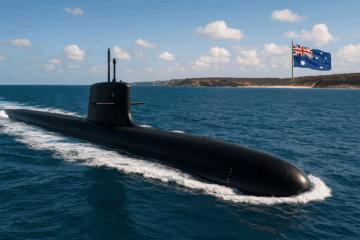The federal budget is currently working its way through Congress. The most visible target for cuts is the Department of Defense, in particular, nuclear modernization accounts.
In 2010, Congress and the Obama administration reached an agreement that saw the Senate ratify the New START treaty in return for the administration’s support of nuclear modernization. This left advocates of nuclear disarmament dismayed.
Recent news that infrastructure costs for the Sentinel intercontinental ballistic missile (ICBM) is increasing appears to be generating efforts to once again kill the land-based leg of the nuclear triad. Such efforts are a mistake but are unlikely to end.
Senator Elizabeth Warren (D-MA) told a SASC nuclear and space hearing on February 29, 2024, that the Sentinel ICBM has no reasonable acquisition program plan and previous Government Accountability Office warnings about the program costs were ignored. Reportedly, the senator’s previous efforts to kill Sentinel in the Senate Armed Services Committee received only one vote—hers.
As for the House of Representatives, one recent push to kill ICBMs was made in September 2021 when Representative John Garamendi (D-CA) proposed that the US block funding for the new ICBM and discard the new Sentinel missile altogether. His amendment failed in Committee 13–46 and on the House floor 118–299.
The new anti-ICBM campaign’s arguments have not changed, with one exception. The cost of ICBM infrastructure has increased. The 450 silos that need replacement exist with widely varied soil conditions. There is necessarily no uniformity of work required because the condition of each sixty-year-old silo varies considerably.
On the other hand, missile program costs are steady. While infrastructure costs increased, the cost of the new missile stayed steady. The motor technology was validated, and the new missile shroud was successfully tested.
Outside the new cost estimates, arguments against the Sentinel missile remain in the fiction category. These arguments are: (1) the nuclear modernization overall program costs are $2 trillion, which is too much; (2) the 50-year-old Minuteman III missile, if needed, can go through an inexpensive service life extension program (SLEP); (3) ICBM missiles are on a hair trigger alert and could accidentally start a nuclear war; (4) the missile force is only a sponge for Russian warheads; (5) there is no reasonable use of the missile except as a first-strike weapon against Russia; and (6) there is no reason to keep ICBMs through 2080 as the Air Force proposes, as this artificially inflates costs, and these old ICBMs can effectively be traded away in a new arms deal. Let’s examine these fairy tales in order.
The Congressional Budget Office (CBO) increased cost estimates for “modernization” by including both costs for modernization and sustainment. By also including all conventional bombers and all costs calculated over 30 years, with an average annual cost increase of 3 percent, the CBO cleverly reached the $1 trillion mark in what it described as only “modernization” costs. All nuclear forces cost $52 billion in fiscal year 2024. Modernization costs, however, which include Sentinel, Columbia, Trident D-5 missile, long-range standoff missile (LRSO), B21 Raider, and nuclear command, control, and communication (NC3) are only $19 billion of the total—36 percent of total nuclear spending.
As for a Minuteman III life extension, it is no longer technically feasible without actually building a new missile. Additionally, it also requires rebuilding the infrastructure which is increasingly costly in annual sustainment costs. In short, sustainment costs of the legacy Minuteman III system would increase even should all ICBM modernization programs be cut.
Even if a life extension on Minuteman III were possible, it must also be replaced with a new missile after a relatively short period of time. Keeping the legacy force, which is rising in cost each year, also runs the risk of what nuclear expert Clark Murdock called “rusting to obsolescence,” especially after 62 years on alert. Over time the remaining Minuteman IIIs would be worthless as a bargaining chip to trade away during arms negotiations with the Russians.
Arguments about “hair trigger alert,” sponges, and the uselessness of ICBMs for deterrence are all connected and easily dismissed altogether, as Representative Doug Lamborn, chair of the House Armed Services Committee, Strategic Forces Subcommittee, does in a recent essay.
First, the president would never authorize the launch of an ICBM without confirming the launch of an enemy attack on the US or allies—or detonation of an enemy warhead on American soil. No smart Russian leader would launch 900 warheads at the United States to destroy 450 missile silos and launch control centers, assuming the attack will not see a response from American submarines and/or bombers.
Since no massive enemy nuclear strike will occur, although a limited “escalate to win” strike is possible, American ICBMs are available for counter strikes and ongoing deterrence missions. The difficulty for any adversary that is planning to successfully destroy all of the United States’ ICBMs is not an invitation for an irrational attack. It complicates enemy plans to make such an attack operationally possible.
As to why original US Air Force comparative cost estimates used 2080 as a point through which the ICBM force would remain on alert, the answer is simple. Sentinel is being designed for a 50-year operational life cycle. Coincidentally, it is also the time period the Columbia-class submarine will remain in the US arsenal.
There was no conspiracy to artificially deflate the costs of alternative ICBM options. Since the disarmament community tries to stop most proposed nuclear modernization efforts, there is no reason to worry why the US is keeping its ICBM force until 2080. Remember, Minuteman III is 62 years old.
Finally, even at the new price, Sentinel’s price tag comes to $2.8 billion a year for the lifetime of the missile and, as General Anthony Cotton, Commander of US Strategic Command explained, it is foundational to American nuclear deterrence. The ICBM will remain in the force from 2031–2080 and in line with General Mattis’ words telling Congress that with respect to the cost of nuclear modernization, “the United States can afford survival.”
Peter Huessy is a senior fellow at the National Institute for Deterrence Studies. Views expressed in this article are the author’s own.

About the Author

Peter Huessy
Mr. Peter Huessy is President of his own defense consulting firm, Geostrategic Analysis, founded in 1981, and through 2021, Director of Strategic Deterrent Studies at the Mitchell Institute on Aerospace Studies. He was the senior defense consultant at the National Defense University Foundation for 22 years. He was the National Security Fellow at the AFPC, and Senior Defense Consultant at the Air Force Association from 2011-2016.
Mr. Huessy has served as an expert defense and national security analyst for over 50 years, helping his clients cover congressional activities, arms control group efforts, nuclear armed states actions, and US administration nuclear related policy, budgets, and strategies, while monitoring budget and policy developments on nuclear deterrence, ICBM modernization, nuclear arms control, and overall nuclear modernization.
He has also covered nuclear terrorism, counterterrorism, immigration, state-sponsored terrorism, missile defense, weapons of mass destruction, especially US-Israeli joint defense efforts, nuclear deterrence, arms control, proliferation, as well as tactical and strategic air, airlift, space and nuclear matters and such state and non-state actors as North Korea, China, Iran, Syria, Venezuela and Hezbollah, Hamas, and Al Qaeda. This also includes monitoring activities of think tanks, non-governmental organizations, and other US government departments, as well as projecting future actions of Congress in this area. His specialty is developing and implementing public policy campaigns to secure support for important national security objectives. And analyzing nuclear related technology and its impact on public policy, a study of which he prepared for the Aerospace Corporation in 2019.




